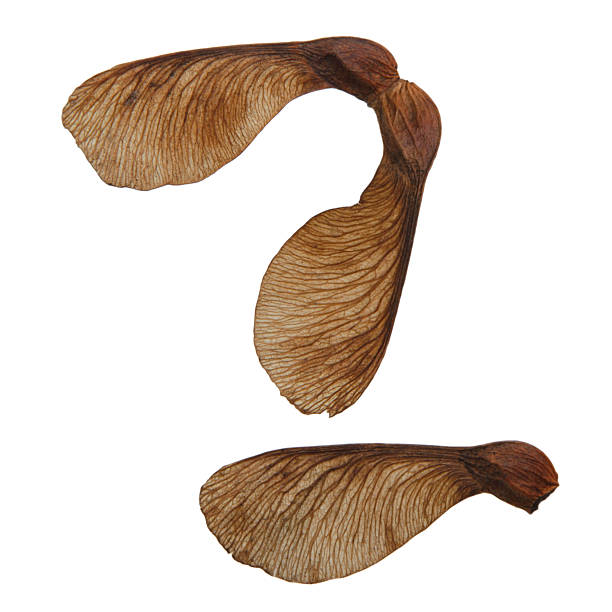How does a tree (or any plant, really), know to evolve to produce a delicious fruit or a poison berry, a seed inside an impenetrable shell, or invent a type of flying machine, in order to reproduce? (Each of these examples exists in my backyard)
How do they receive feedback about their evolutionary experiments? How do they know it worked/failed. [10]

They don’t know. They exist because their traits allowed them to survive better than other traits. If an evolution fails, they cease to exist. What’s left over is what you get to see
what a weird tasting fruit , fuck this plant species get this mf out the gene pool
Damsons still exist tho
And crabapples
Both make good jams, gins and desserts
There is no knowing or feedback.
Mutations are random and there are many more failed mutations than successful ones.
You only see the successful species for that very reason, the failed ones have not been able to compete or pass their genes on at an appropriate rate.
the failed ones have not been able to compete or pass their genes on
Well, that’s feedback.
That the feedback mechanism that makes the process work. What is hard to understand is that it “informs” a population, not any individual.
It’s feed back only in the sense that it can be seen as a success or a failure by an independent observer.
It’s not like a tree can see that last year’s seeds weren’t very good and try a different mutation this year.
Genes are not self aware, mutations do not have an end goal and survival simply comes down to chance.
It’s not that complex.
A mutation happens. It can result in either a disadvantage that prevents the plant from surviving to reproduce or an advantage that helps the plant survive to reproduce.
There’s no “knowing” involved. There is no intent on the part of the plant. It’s just random. You’re seeing the descendants of the plants that got an advantageous mutation.
What you’re not seeing in your yard are the billions of different plants that never survived because their mutation was a disadvantage.
As others have said, evolution doesn’t really work that way: an individual organism doesn’t make changes to suit its environment. Offspring aren’t carbon copies of their parents, there’s variation of pretty much every attribute. Most attributes don’t really impact survivability, but sometimes they do. If certain things tend to result in an organism surviving to reproduce better than other things, those traits get reinforced and are more likely to be passed on. Over lots and lots of generations, you can end up with pretty much every organism in that species having that trait, and that trait getting more and more pronounced.
In our effort to disillusion people of the idea that evolution has a purpose or conscious hand, we over-simplify things, though. Plants actively (but not consciously) shape their own evolution through complex molecular and genetic mechanisms. They can respond to environmental stresses by altering their DNA methylation patterns, potentially priming future generations for similar conditions. Plants also engage in niche construction, modifying their surroundings in ways that influence their evolutionary trajectory. For instance, they can change soil chemistry through root exudates, creating new selective pressures for themselves and their offspring. Plants participate in intricate co-evolutionary relationships with pollinators, herbivores, and other organisms. These interactions create dynamic fitness landscapes that drive reciprocal evolutionary changes. While not “inventing” traits in a deliberate sense, plants possess sophisticated genetic tools - such as whole genome duplications, transposable elements, and adaptable gene networks - that allow for rapid evolutionary innovations. These mechanisms enable plants to continually adapt and evolve, even without conscious intent or direct feedback.
I’m not familiar with those things but, if that’s all accurate, aren’t those abilities themselves things that were naturally selected for?
Plants with more flexible and responsive genetic systems were better able to adapt to changing environments and thus more likely to survive and reproduce, so yeah. However, the basic building blocks of these systems - DNA replication, gene expression, and the fundamental biological processes arose from simpler chemical and physical interactions that were likely governed by principles of self-assembly and thermodynamics. The primary drivers are different at different levels of abstraction and complexity, and there’s dynamic interaction across levels.
Thermodynamics -> Natural Selection -> Responsive (Epi)Genetics -> Memetics -> Metamemetics (probably?)
We “boil things down” to Natural Selection or Thermodynamics as is convenient for communication, but the higher levels affect the lower as well. So we can’t really reduce them like that without losing important information.
It doesn’t. The fruit that gets eaten gets to make more via the spread seeds. The plant that’s bitter doesn’t get eaten before it can go to seed. It’s not more complicated than that.
I’m with you. My wife has REALLY gotten into plants in the last year or so, and it amazes me how “smart” they are.
Obviously, everyone here is right. There is no intelligence, just genetics, but watching my morning glory wall climb the rope net to the roof of the house just blows my mind.
It’s crazy to think about all the trial and error over the centuries that it took for a simple flower to develop little sensor hairs that explore its surroundings and wrap itself around anything in range.
How do they know it worked/failed.
A lot of answers here, but I think what’s still missing is the most intuitive. The plant that sent the seed doesn’t know, rather its offspring does - by simply surviving. The species as a whole “knows” by whatever works.
If, over a long time period, that tree’s particular characteristics lead to the species surviving, then it worked.
If it doesn’t, then the species dies out.
There’s no feedback, other than whether or not the species continues to exist.
How does it design a uni wing device to carry its seed to the earth?
as, for example an elm or maple? a random mutation may have provided a small spur to a seed. the spur changed the trajectory of the falling seed and may have allowed it to fall further from the parent plant and into a more ideal growing environment or simply further afield, which would allow it to slightly out-complete others plants.
if this change proved sucessful over longer periods of time, then the mutation would likely get more pronounced as long as the mutation continued to improve the plants fitness for its environment. fast forward 100,000 years later and environment pressure combined with inheritability and mutation have given you seeds with glide wings.
Makes sense. I realize the first part of the Q was simplistic. And I should have known (I did) the answer. It’s the design I’m most perplexed by - not the why, the how. I guess this would be the simplest way to explain it.
Still, that birds, insects, and trees, all have wings… It’ll never not be mind blowing.
You could look up some videos on “mutation design” which is a stochastic design method, which is basically used to design structures (like drone bodies) by using random mutations. It really shows how evolution works in real time.
How do they receive feedback about their evolutionary experiments? How do they know it worked/failed.
They’re not performing experiments, mutations are random and they either help the plant survive/reproduce, make it harder to do so, or have no appreciable effect. If it helps the plant, more of them will survive and reproduce, meaning more of the plant with that mutation will be more common. If it hurts, then it will be less common.
deleted by creator
Genetics.
Your senses do not feed back into evolution. It’s all random mutations that happen to make it slightly better at surviving. Generational survival is the pass/fail signal.
For many things that seem to require a large single leap in progress it turns out that there is a clear story of gradually developing it over a long time.
You might like Richard Dawkins’ book The Greatest Show On Earth
How do you make eggs or sperm?


